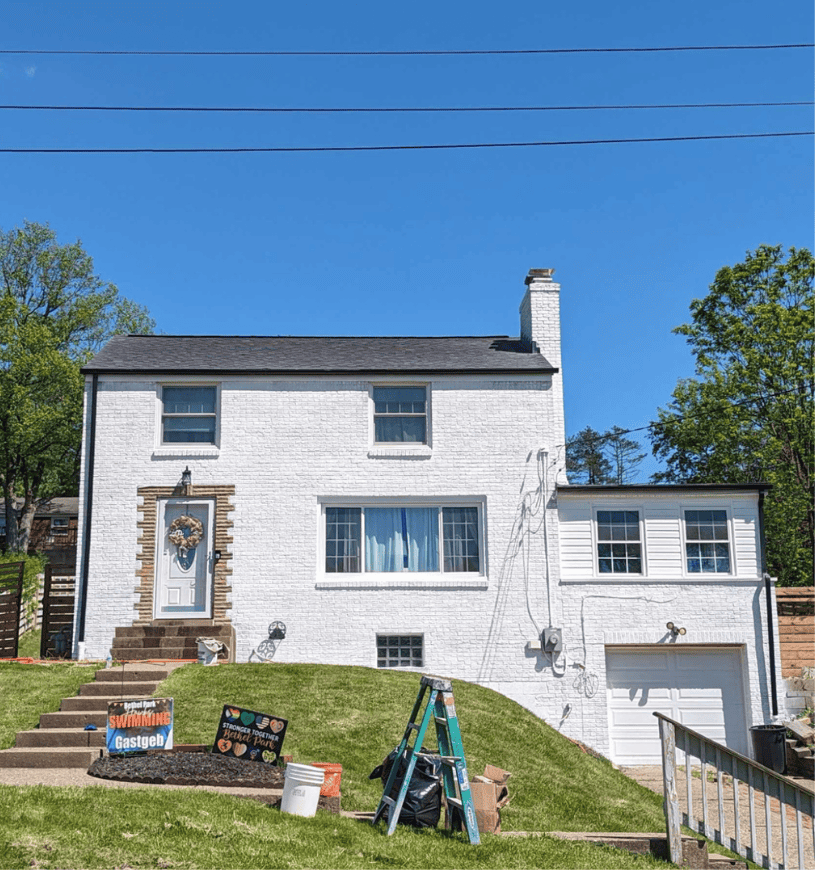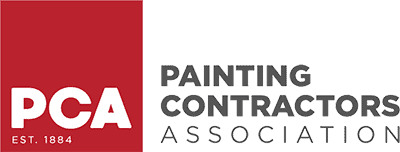Choosing to repaint the exterior of your home can bring a fresh new look and a sense of accomplishment. However, one question often lingers: how long for exterior paint to dry?
For homeowners in Peters Township, PA, this is a significant consideration given the area’s unique weather patterns. If you’ve ever started an exterior house painting project only to worry about an unexpected rain shower or the next heatwave, you’re in good company.
In this blog, we’ll explore the key elements that determine how long exterior paint takes to dry, providing you with practical tips and insights to ensure your project is a success.
Key Takeaways:
- Understanding how long for exterior paint to dry, involves considering weather conditions, types of paint, and proper surface preparation.
- Following best practices, such as applying thin coats and ensuring proper ventilation, can significantly impact drying times and the overall quality of the paint job.
- Seasonal variations play a role, with spring, fall, and managed summer conditions being ideal for exterior painting projects.

How Long for Exterior Paint to Dry?
Weather conditions are one of the most significant factors affecting how long exterior paint dries. The local climate can be quite variable, impacting your painting project’s drying time. Temperature and humidity levels are crucial elements to consider.
Ideally, exterior paint should be applied when temperatures are between 50°F and 85°F. High humidity can prolong drying times, as the moisture in the air prevents the paint from evaporating quickly.
Conversely, extremely hot or dry conditions can cause the paint to dry too fast, leading to potential cracking or peeling. Seasonal variations also play a role. for instance, spring and fall typically offer more favorable conditions compared to the cold of winter. Summer is also a good season for painting if managed properly, and we offer exterior painting services during this time to take advantage of the longer daylight hours and typically dry weather.
Types of Paint
The types of paint you choose significantly influences how long for exterior paint to dry. You generally have two main options: oil-based and latex paints. Let’s break down each type to understand their characteristics and drying times.
- Oil-Based Paints
Oil-based paints are known for their durability and smooth finish. They are often chosen for surfaces that require a hard, durable coating. However, these paints have a longer drying time. Typically, oil-based paints take about 6-8 hours to dry to the touch and up to 24 hours to be ready for a second coat. The extended drying time can be advantageous as it allows the paint to level out and create a smooth finish, but it also means you’ll need to plan for a longer project timeline. Additionally, oil-based paints have a stronger odor and require mineral spirits or paint thinner for cleanup. - Latex Paints
Latex paints, also known as water-based paints, are popular for their quick drying times and ease of use. They usually dry to the touch within an hour and are ready for a second coat in about 4-6 hours. This faster drying time makes latex paints ideal for projects where time is a critical factor. Latex paints are also more environmentally friendly, have less odor, and can be cleaned up with soap and water. However, they may not provide the same level of durability and smooth finish as oil-based paints, especially on high-traffic surfaces.
Surface Prep
At Four Pillars Paint, we understand that proper surface preparation is essential for ensuring that your exterior paint dries correctly and lasts a long time. The condition of your home’s exterior surfaces can vary, making thorough prep work even more critical. Here’s our process:
- Cleaning
Our process begins with a thorough cleaning of the surface. Dirt, dust, mildew, and old paint residues can prevent new paint from adhering properly. We use power washing to clean exterior surfaces effectively. We ensure the surface is completely dry before moving to the next step. - Repairing
We then inspect the surface for any damage, such as cracks, holes, or rotting wood. These issues need to be repaired before painting. Our team uses suitable fillers for cracks and holes and replaces any damaged wood. We also sand the repaired areas to ensure they are smooth and level with the surrounding surface. - Sanding
Sanding helps to create a smooth surface for the paint to adhere to and removes any peeling or flaking old paint. It’s essential to use the right grit sandpaper; typically, we use a medium grit (80-120) for most exterior surfaces. After sanding, we wipe down the surface to remove any dust. - Priming
Applying a high-quality primer is an important step, especially if we’re painting over bare wood or a darker color. Primer helps the paint adhere better and provides a uniform base, improving the finish and durability of the paint job. We allow the primer to dry according to the manufacturer’s instructions before applying the topcoat.
Proper Paint Application Techniques
The way paint is applied can significantly influence how long for exterior paint to dry. We also follow specific techniques to ensure the best results for your painting project.
- Thin Coats
Applying paint in thin coats is crucial. Thick layers take longer to dry and are more likely to run or sag. By using thin coats, we ensure that each layer dries properly before applying the next, resulting in a smooth and even finish. - Brush and Roller Selection
The tools used for painting also matter. We select high-quality brushes and rollers that are appropriate for the type of paint and surface. This helps to apply the paint evenly and reduces the chances of streaks and uneven drying. - Direction of Application
Applying paint in consistent, even strokes is important. We typically start from the top and work our way down, which helps to catch any drips and ensures an even coat. This technique also helps in achieving a uniform drying time across the entire surface. - Proper Ventilation
Good ventilation is essential for proper drying. We ensure that there is adequate airflow around the painted surfaces, which helps the paint to dry faster and more evenly. In enclosed areas, we use fans to enhance air circulation. - Avoiding Direct Sunlight
While painting, we avoid direct sunlight, especially during the hottest part of the day. Direct sunlight can cause the paint to dry too quickly, leading to potential issues like blistering or peeling. We schedule our painting sessions during cooler parts of the day to avoid this problem.
Other Factors
In addition to weather conditions, types of paint, and application techniques, several other factors can influence how long for exterior paint to dry.
- Wind and Airflow
Wind and airflow can significantly affect drying times. Moderate airflow helps the paint dry faster by facilitating the evaporation process. However, too much wind can cause dust and debris to stick to the wet paint, compromising the finish. We monitor and manage airflow to optimize drying conditions. - Time of Day
The time of day when painting is done can impact drying times. Painting in the early morning or late afternoon is often ideal, as temperatures are moderate and humidity levels are lower. This helps the paint to dry evenly without the risk of it drying too quickly or too slowly. - Surface Material
Different materials absorb paint differently, affecting drying times. For example, wood surfaces may absorb paint more quickly than metal or vinyl, leading to faster drying times. We take into account the specific material being painted and adjust our techniques accordingly. - Number of Coats
The number of coats applied can also impact drying times. Each additional coat requires the previous one to be completely dry to avoid issues like bubbling or uneven texture. We carefully plan the number of coats needed and ensure adequate drying time between each application.
Final Thoughts
In summary, understanding how long for exterior paint to dry involves considering several key factors, including weather conditions, types of paint, surface preparation, application techniques, and other environmental influences. By carefully planning your painting project and following best practices, you can achieve a professional and long-lasting finish.
At Four Pillars Paint, we pride ourselves on being expert house painters with extensive experience in both residential and commercial painting services. We provide top-quality painting solutions in Pittsburgh, Mt. Lebanon, PA, and the surrounding areas. Our team is dedicated to delivering exceptional results, whether you’re updating the exterior of your home or enhancing your business’s curb appeal.
Call us at 412-844-5002 for a FREE estimate and let us help you bring your painting project to life with precision and care!


